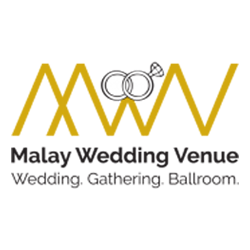Islamic calligraphy, the revered art of beautiful handwriting, has been a cherished part of Indian Muslim weddings for centuries. Its role in these celebrations is not just decorative; it reflects cultural heritage and spiritual symbolism. In this blog, we will explore the rich history, deep symbolism, and modern trends of Islamic calligraphy in Indian Muslim weddings.
History
The history of Islamic calligraphy in India dates back to the Mughal era, when Mughal emperors, known for their appreciation of art, architecture, and literature, were great patrons of calligraphy. Mughal art, with its intricate designs and calligraphic details, greatly influenced Islamic calligraphy in India. Many Persian calligraphers migrated to India during this time, bringing with them the art of Nastaliq, which shaped the development of Indian Islamic calligraphy.
Islamic calligraphy is central to Islamic art and culture, starting in the 7th century as a means to beautify and preserve Quranic texts. In India, the artistry of calligraphy flourished within Mughal-era buildings, Quranic manuscripts, and wedding art, making it a lasting feature of Indian Muslim culture.
Symbolism
Islamic calligraphy carries profound spiritual meaning, often seen as a reflection of the beauty of Allah’s words. Traditionally, calligraphy has been used to transcribe the Quran, religious texts, and the names of Allah and Prophet Muhammad (PBUH), elevating these texts through visual artistry.
In Indian Muslim weddings, calligraphy serves to enhance the wedding’s elegance and spiritual significance. It is commonly used to adorn wedding invitation cards, venue decor, and other wedding-related items, adding sophistication and cultural depth to the celebration.
Trends
Islamic calligraphy has evolved over the centuries, with new styles and applications emerging in recent years. Some of the most popular calligraphy styles seen in Indian Muslim weddings include:
1. Nastaliq Script
Originating in Persia, Nastaliq is known for its flowing lines and delicate curves. Widely used in Urdu calligraphy, it is especially popular for wedding invitations and decor in Indian Muslim weddings, giving them an elegant and refined aesthetic.
2. Thuluth Script
Recognized for its bold and elegant appearance, Thuluth is often used in religious texts and traditional Arabic calligraphy. Characterized by its elongated vertical lines and pronounced curves, it is a striking choice for wedding decorations, adding a sense of grandeur and tradition.
3. Contemporary Trends
A growing trend is the use of calligraphy in wedding favors and gifts. Couples are opting for personalized calligraphic items, such as engraved pens, notebooks, or keychains, as unique wedding favors for their guests. Calligraphy has also been incorporated into custom wedding gifts, like nameplates, wall art, and jewelry, allowing couples to offer memorable and meaningful tokens to their loved ones.
Conclusion
Islamic calligraphy is a timeless art form that has enriched Indian Muslim weddings for centuries, blending Islamic art, culture, and spirituality. It brings elegance, sophistication, and deep symbolism to weddings, celebrating both heritage and beauty. As trends evolve, the art of Islamic calligraphy continues to inspire new forms of expression, from traditional scripts to contemporary personalized gifts, keeping this ancient tradition alive in the hearts of couples and their guests.
